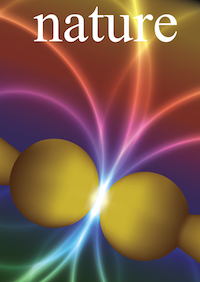Accueil > Actualités > Revealing the quantum regime in tunnelling plasmonics
Revealing the quantum regime in tunnelling plasmonics
The team from the ISMO, University of Cambridge, and the Basque Country have combined tour de force experiments with advanced theories to show how light interacts with matter at nanometre sizes.
The work demonstrates that quantum tunnelling of electrons between nano-sized balls of gold can change the color of the nano-dimer.
The new results, published in the journal Nature, set a fundamental quantum limit on how tightly light can be trapped.
Because electrons in a metal move easily, shining light onto a tiny crack pushes electric charges onto and off each crack face in turn, at optical frequencies. The oscillating charge across the gap defines the‘plasmonic’ colour of the structure, but only when the gap is small enough, below 1nm.
From the theoretical point of view, one had to fuse classical and quantum views to be able to explain the colour shifts seen in experiment.
The new insights from this work suggest ways to measure the world down to the scale of single atoms and molecules, and strategies to make useful tiny devices.
| This result has been published in the revue Nature : Revealing the quantum regime in tunnelling plasmonics Kevin J. Savage [1], Matthew M. Hawkeye[1], Rubén Esteban [2], Andrei G. Borisov[2] [3], Javier Aizpurua[2] & Jeremy J. Baumberg[1] |
[1] Nanophotonics Centre, Cavendish Laboratory, University of Cambridge, Cambridge CB3 0HE, UK
[2] Material Physics Center CSIC-UPV/EHU and Donostia International Physics Center DIPC, Paseo Manuel de Lardizabal 5, 20018 Donostia-San Sebastián, Spain
[3] Institut des Sciences Moléculaires d’Orsay – UMR 8214, CNRS-Université Paris Sud, Bâtiment 351, 91405 Orsay Cedex, France



